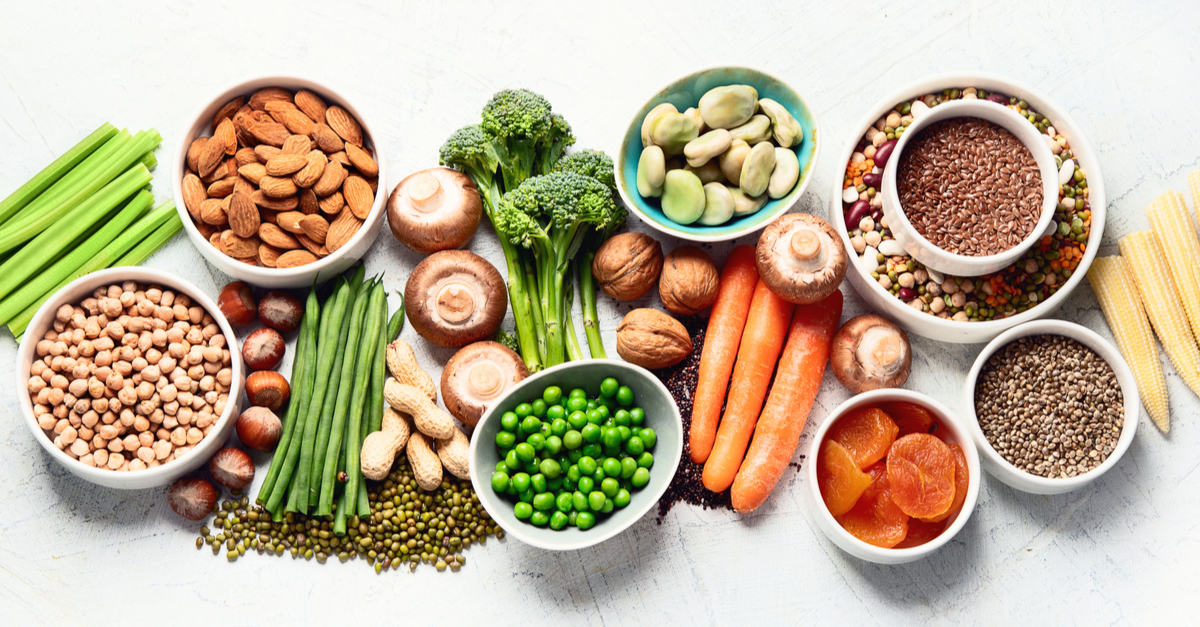Cholesterol and Heart Health
Cholesterol and Heart Health
What is Cholesterol?
Cholesterol is a type of fat created by the body that’s long been studied for its connection to heart health. While cholesterol can come from the diet, the body makes enough cholesterol on its own to insulate nerves, create cell membranes, and produce certain hormones. Cholesterol is absorbed in the digestive tract where it makes its way to the liver, ultimately circulating throughout the body via the bloodstream. Many factors contribute to an individual’s cholesterol status, including weight, physical activity, age, genetics, medical conditions, and medication use.
Triglycerides are another type of fat – the most common in the body – that can come from both dietary sources and be generated by the body itself. Individuals with high triglycerides usually have high total cholesterol. Many people with metabolic syndrome or diabetes also have higher triglycerides levels. Triglycerides, cholesterol, and other types of fat are transported via different protein complexes; fats cannot travel through the blood on their own because blood is water-based, and fats are hydrophobic (averse to water).
Cholesterol Transportation Throughout the Body
Lipoproteins are carrier proteins responsible for transporting cholesterol throughout the body. For example, low-density lipoprotein (LDL) carries a low density of proteins and a high density of cholesterol. High LDL levels are associated with negative health outcomes because LDL can build up and cause blockages in blood vessels. High-density lipoprotein (HDL) has the opposite composition, and it is associated with positive health outcomes because it transports cholesterol out of the body’s tissues and promotes cholesterol excretion through the liver. Often when discussing “high cholesterol” in a clinical setting, an individual has higher levels of LDL cholesterol and lower levels of HDL cholesterol, which are leading risk factors for heart disease like coronary artery disease and stroke.1
In addition to the concentration of LDL and HDL, LDL particle size may also be an important determinant of risk of cardiovascular diseases. Some LDL particles are larger and more buoyant, whereas others are smaller and denser; these smaller LDL particles contribute to the development of atherosclerosis via several mechanisms.1 Studies have sought to identify the precise role of different fatty acids and foods in changing the concentration of either the larger or smaller LDL particles, but results have been inconsistent. This could be due to the matrix of the specific foods including the presence of vitamins, minerals, phospholipids, probiotics, and phytochemicals.1 The size of LDL particles is likely related to sex, with the smaller, denser LDL pattern more common in men, in addition to other influencing factors including age, smoking habits, exercise, and oral contraceptive use.2
Cholesterol and Plaque Buildup
High levels of LDL cholesterol impact the risk for heart disease because LDL can build up and create obstructive plaques in blood vessel walls, inhibiting blood flow and leading to conditions like atherosclerosis.1 On the other hand, high levels of HDL cholesterol can address the obstruction, removing cholesterol from plaques and transporting it away for excretion.
The Centers for Disease Control and Prevention (CDC) estimates that approximately 12 percent of adults 20 years of age and older have high total cholesterol (higher than 240 mg/dL) and low HDL cholesterol (less than 40 mg/dL).3 Dietary choices make a significant impact on lowering cholesterol to a healthy level, as well as maintaining currently healthy cholesterol levels. For example, foods high in soluble fiber attach to cholesterol in the digestive system and promote cholesterol excretion. Sources of soluble fiber include oats, barley, and other whole grains, buckwheat, herbs like garlic, beans, nuts, and fruit. Additionally, some plant sterols and stanols inhibit cholesterol absorption in the body; they are often fortified in food and available as nutritional supplements. Research also shows that inositol (a type of carbohydrate and structural component of cell membrane phospholipids) lowers cholesterol in groups with high risk for cholesterol problems, although the mechanism is not clear.4
Consumption of foods that contain trans fats or high levels of saturated fats increases LDL cholesterol and lowers HDL cholesterol. Thus, avoiding these types of foods may be important for individuals looking to optimize their cholesterol status. Trans fats or partially hydrogenated oils are found in most processed foods, and saturated fats should be consumed in moderation. Oils like palm oil, palm kernel oil, and coconut oil as well as meat and dairy products contain saturated fats that, in excess, can increase LDL cholesterol.
There is some inconsistency in the body of research surrounding cholesterol and heart health that make it difficult to set in stone the relationship between dietary cholesterol and cardiovascular health prevention and management.5 That being said, the 2015-2020 Dietary Guidelines for Americans provides a general recommendation to eat a diet low in dietary cholesterol to reduce the risk of heart disease. And it is generally accepted that optimizing cholesterol levels through dietary choices is centered around lower LDL cholesterol levels and higher HDL cholesterol levels.5
- Ma, Hongbao (2004). Cholesterol and Human Health. Nature and Science, 2(4), 17-21.
- Virani, S. S., Alonso, A., Aparicio, H. J., Benjamin, E. J., Bittencourt, M. S., Callaway, C. W., Carson, A. P., Chamberlain, A. M., Cheng, S., Delling, F. N., Elkind, M., Evenson, K. R., Ferguson, J. F., Gupta, D. K., Khan, S. S., Kissela, B. M., Knutson, K. L., Lee, C. D., Lewis, T. T., Liu, J., … American Heart Association Council on Epidemiology and Prevention Statistics Committee and Stroke Statistics Subcommittee (2021). Heart Disease and Stroke Statistics-2021 Update: A Report From the American Heart Association. Circulation, 143(8), e254–e743. https://doi.org/10.1161/CIR.0000000000000950
- Carson, J., Lichtenstein, A. H., Anderson, C., Appel, L. J., Kris-Etherton, P. M., Meyer, K. A., Petersen, K., Polonsky, T., Van Horn, L., & American Heart Association Nutrition Committee of the Council on Lifestyle and Cardiometabolic Health; Council on Arteriosclerosis, Thrombosis and Vascular Biology; Council on Cardiovascular and Stroke Nursing; Council on Clinical Cardiology; Council on Peripheral Vascular Disease; and Stroke Council (2020). Dietary Cholesterol and Cardiovascular Risk: A Science Advisory From the American Heart Association. Circulation, 141(3), e39–e53. https://doi.org/10.1161/CIR.0000000000000743
- Gerli, S., Mignosa, M., & Di Renzo, G. C. (2003). Effects of inositol on ovarian function and metabolic factors in women with PCOS: a randomized double blind placebo-controlled trial. European review for medical and pharmacological sciences, 7(6), 151–159.
- Carson, J., Lichtenstein, A. H., Anderson, C., Appel, L. J., Kris-Etherton, P. M., Meyer, K. A., Petersen, K., Polonsky, T., Van Horn, L., & American Heart Association Nutrition Committee of the Council on Lifestyle and Cardiometabolic Health; Council on Arteriosclerosis, Thrombosis and Vascular Biology; Council on Cardiovascular and Stroke Nursing; Council on Clinical Cardiology; Council on Peripheral Vascular Disease; and Stroke Council (2020). Dietary Cholesterol and Cardiovascular Risk: A Science Advisory From the American Heart Association. Circulation, 141(3), e39–e53. https://doi.org/10.1161/CIR.0000000000000743





